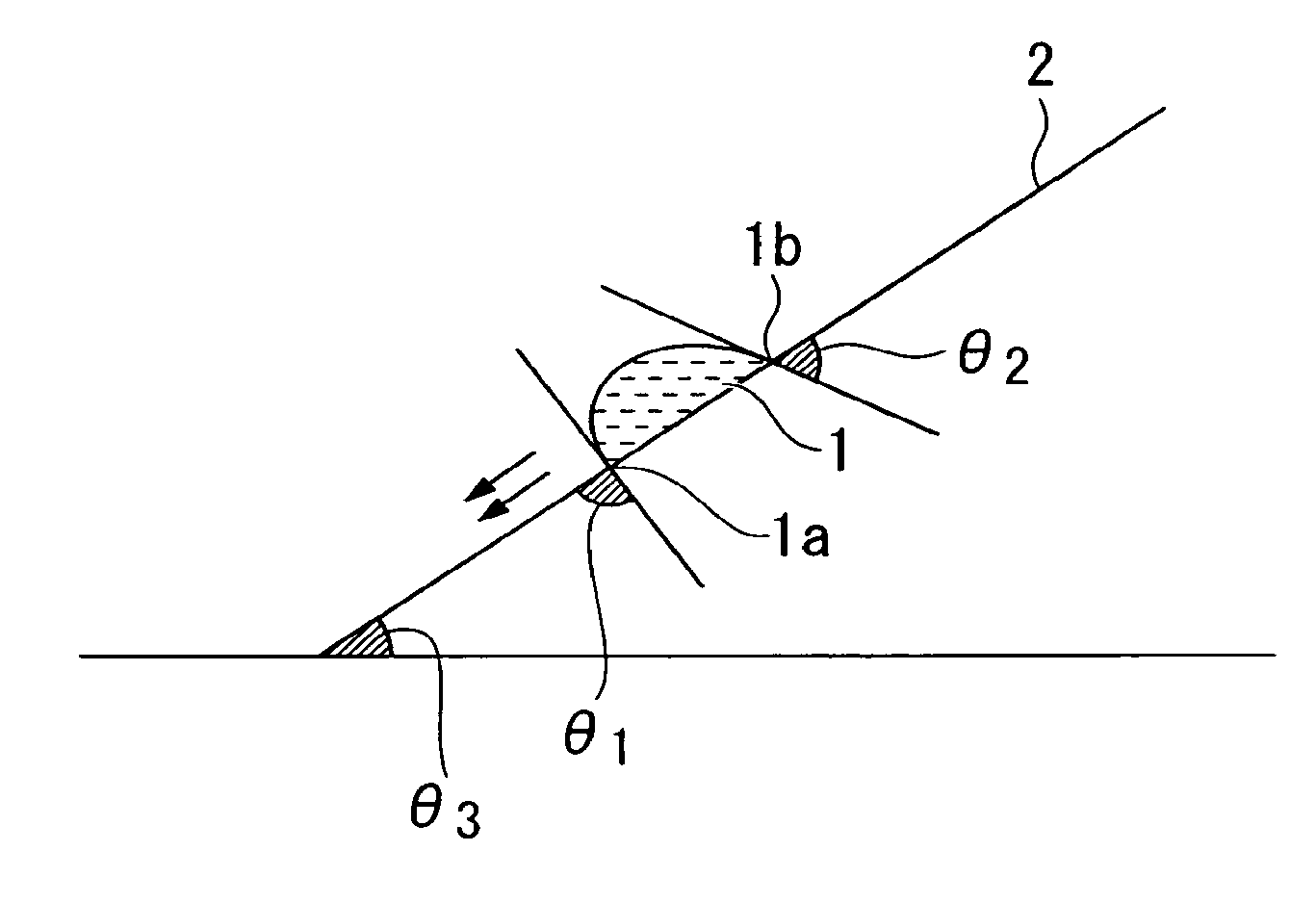Resist composition for immersion exposure, method of forming resist pattern, and fluorine-containing polymeric compound
a technology of resist composition and immersion exposure, which is applied in the direction of basic electric elements, electrical equipment, nuclear engineering, etc., can solve the problems of adversely affecting productivity, reducing speed, and so as to reduce elution of substances, adversely affecting lithography properties, and enhancing the hydrophobicity of resist film surfaces
- Summary
- Abstract
- Description
- Claims
- Application Information
AI Technical Summary
Benefits of technology
Problems solved by technology
Method used
Image
Examples
synthesis example 1
Synthesis of Compound (5)
[0496]61 g (600 mmol) of triethylamine and 64 g (418 mmol) of methyl bromoacetate were added to 300 ml of a THF solution containing 30 g (348 mmol) of methacrylic acid in a nitrogen atmosphere at 0° C., and the temperature was elevated to room temperature, followed by stirring for 3 hours. After conducting thin-layer chromatography (TLC) to confirm that the raw materials had been consumed, the reaction solution was subjected to distillation under reduced pressure to remove the solvent. Then, water was added to the resultant, and extraction was conducted with ethyl acetate three times. The resulting organic phase was washed with water twice, and then subjected to distillation under reduced pressure to remove the solvent, thereby obtaining 47 g of a compound (5-1) in the form of a colorless liquid (yield: 85%).
[0497]Subsequently, 700 ml of a THF solution containing 30 g (190 mmol) of the compound (5-1) was prepared, and 700 ml of a 2.38% by weight aqueous solu...
synthesis example 2
Synthesis of Compound (4)
[0499]40 g (277.5 mmol) of the compound (5-2) was added to 350 ml of a THF solution containing 95.0 g (360.8 mmol) of 3,3,4,4,5,5,6,6,6-nonafluorohexanol, 79.8 g (416.0 mmol) of ethyldiisopropylaminocarbodiimide (EDCI) hydrochloride and 1.7 g (13.8 mmol) of dimethylaminopyridine (DMAP) in a nitrogen atmosphere at 0° C., and the temperature was elevated to room temperature, followed by stirring for 3 hours. After conducting thin-layer chromatography (TLC) to confirm that the raw materials had been consumed, the reaction solution was cooled to 0° C., and water was added thereto to stop the reaction. Then, extraction was conducted with ethyl acetate three times, and the obtained organic phase was washed with water twice. Thereafter, the solvent was distilled off under reduced pressure to obtain a crude product, and the obtained crude product was purified by silica gel filtration (using ethyl acetate), thereby obtaining 99.6 g of a compound (4) in the form of a ...
synthesis example 3
Synthesis of Compound (7)
[0502]45 g (333 mmol) of potassium carbonate and 45 g (296 mmol) of methyl bromoacetate were added to 450 ml of an acetone solution containing 46 g (269 mmol) of 2-vinylnaphthol in a nitrogen atmosphere at 0° C., and then the temperature was elevated to room temperature, followed by stirring for 3 hours. After conducting thin-layer chromatography (TLC) to confirm that the raw materials had been consumed, the reaction mixture was subjected to filtration, and the obtained filtrate was subjected to distillation under reduced pressure to remove the solvent. Then, water was added to the resultant, and extraction was conducted with ethyl acetate three times. The resulting organic phase was washed with water twice, and then subjected to distillation under reduced pressure to remove the solvent. The resulting crude product was purified by recrystallization (using an n-heptane / ethyl acetate mixture), thereby obtaining 54 g of a compound (7-1) in the form of a colorle...
PUM
| Property | Measurement | Unit |
|---|---|---|
| temperature | aaaaa | aaaaa |
| temperature | aaaaa | aaaaa |
| temperature | aaaaa | aaaaa |
Abstract
Description
Claims
Application Information
 Login to View More
Login to View More - R&D
- Intellectual Property
- Life Sciences
- Materials
- Tech Scout
- Unparalleled Data Quality
- Higher Quality Content
- 60% Fewer Hallucinations
Browse by: Latest US Patents, China's latest patents, Technical Efficacy Thesaurus, Application Domain, Technology Topic, Popular Technical Reports.
© 2025 PatSnap. All rights reserved.Legal|Privacy policy|Modern Slavery Act Transparency Statement|Sitemap|About US| Contact US: help@patsnap.com



